Next-Generation Transistors Market Size
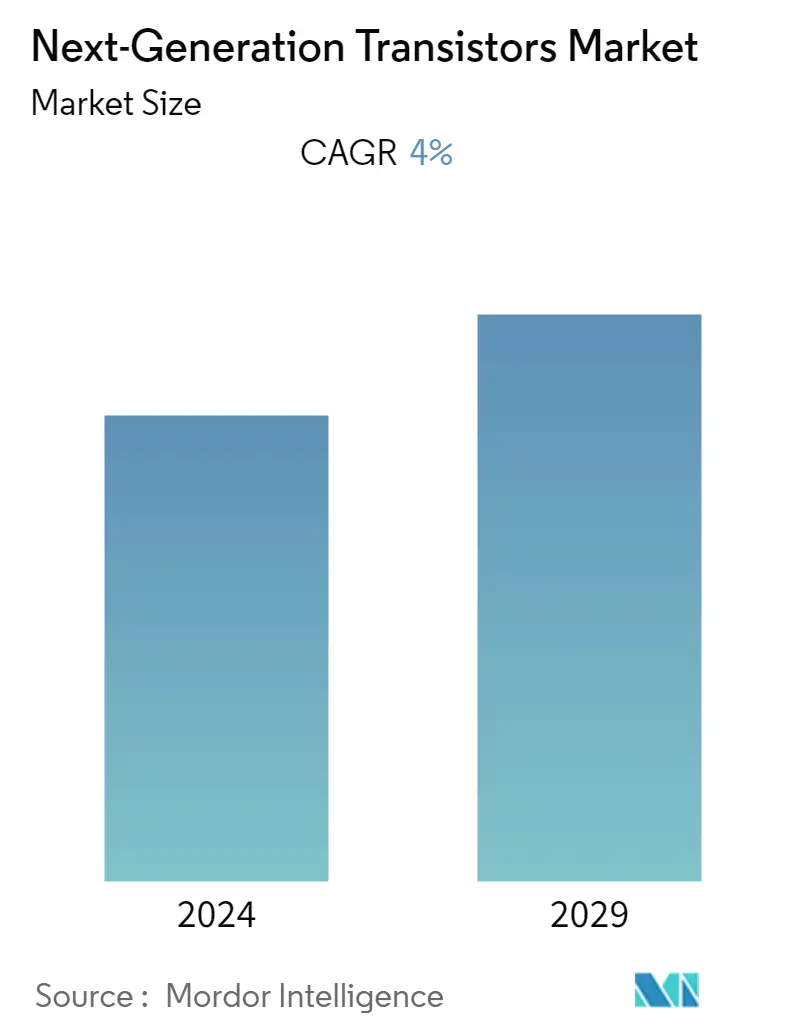
| Study Period | 2019 - 2029 |
| Base Year For Estimation | 2023 |
| CAGR | 4.00 % |
| Fastest Growing Market | Asia Pacific |
| Largest Market | North America |
| Market Concentration | Low |
Major Players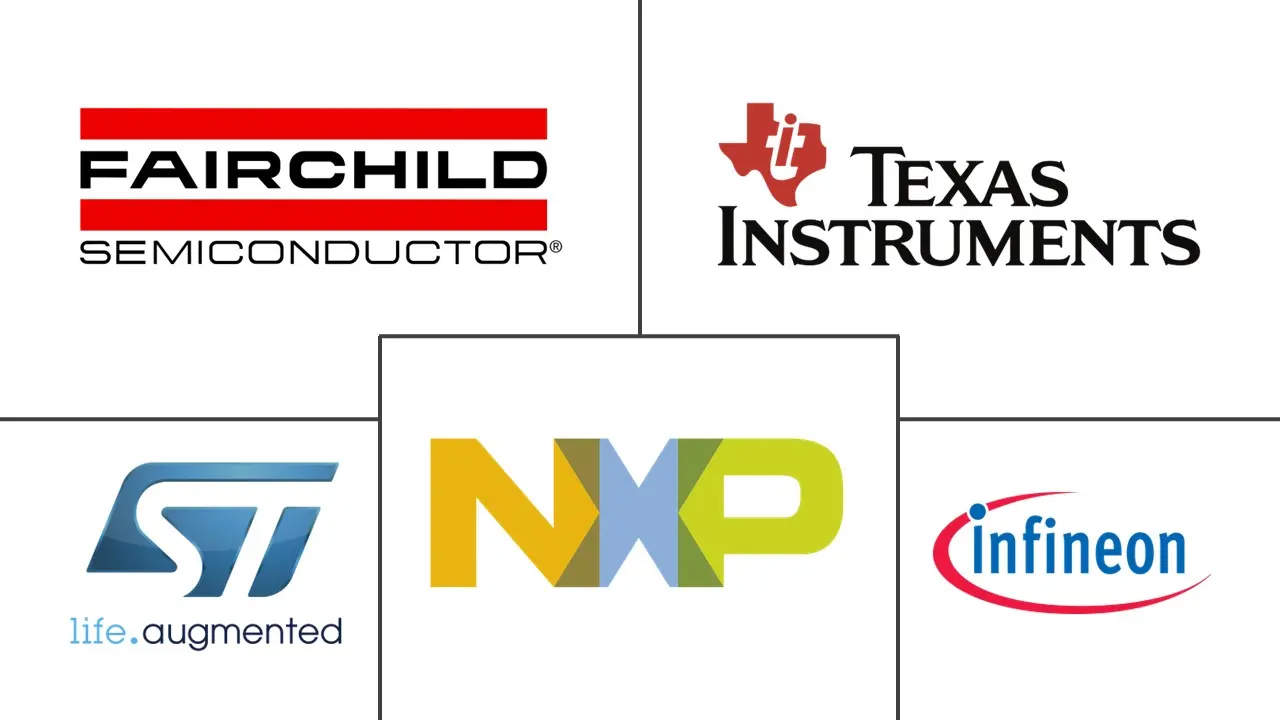
*Disclaimer: Major Players sorted in no particular order |
Next-Generation Transistors Market Analysis
Next-Generation Transistors Market is expected to grow at a CAGR of 4% over the forecast period. Primarily due to the increase in the consumer electronics market. A billion transistors are present in the newest smartphones on the market, ensuring speedier gadget operation. According to IBEF, India's smartphone market revenue crossed USD 38 billion recently, with a 27% YoY growth. In addition, Xiaomi, a top smartphone company, shipped 39.5 million devices in Q2 2022.
- Semiconductor materials represent one of the significant innovations in the electronics industry. This can be accredited to their high electron mobility, wide temperature limits, and low energy consumption. According to SEMI, worldwide sales of total semiconductor manufacturing equipment by original equipment manufacturers reached a record USD 117.5 billion in 2022, rising 14.7% from the previous industry high of USD 102.5 billion in 2021 and forecasted to increase by USD 120.8 billion in 2023.
- The growing scope of advanced features in consumer devices is also fueling the need for fast and real-time processing. Furthermore, with the advent of IoT, features like AI, data analytics, real-time data transfer, and processing are becoming a basic necessity for any advanced devices, creating a massive opportunity for the studied market vendors. Furthermore, TSMC showcased its upcoming manufacturing process technology at the company's 2022 North America Technology Symposium, with the highlight being details of its next-generation 2nm node, known internally as N2. The company will go into production with the 3nm node at the end of 2022.
- Moreover, in April 2022, Scientists created what they believe is the first magneto-electric transistor that could help to make electronics more power-efficient. Along with curbing the energy consumption of any microelectronics that incorporate it, the team's design could reduce the number of transistors needed to store specific data by as much as 75 percent leading to smaller devices. It could also lend those microelectronics "steel-trap memory" that remembers exactly where its users leave off, even after being shut down or abruptly losing power.
- Further, many players in the market are shifting towards employing nanosheets in their manufacturing process. For instance, in June 2022, Taiwanese chipmaker TSMC revealed details of its much-anticipated 2nm production process node - set to arrive in 2025 - which will use a nanosheet transistor architecture and enhancements to its 3nm technology. According to the company. The newer generations of silicon semiconductor chips are expected to increase speed. They will be more energy efficient as process nodes shrink and the tech industry continues to fight to hang onto Moore's Law.
- Moreover, Post Covid 19 is affecting the production and manufacturing capacity of the semiconductor and other electronics components industry. For instance, in June 2022, according to sources in the Chinese Press, Shenzhen's Omicron lockout forced Huaqiangbei, one of the world's biggest electronics markets, to partially close once again. Huaqiangbei, a center for the supply of semiconductors, cellphones, and other electronics, is situated in the Futian District of Shenzhen. According to financial media Cailianshe, certain vendors in Huaqiangbeihave temporarily ceased operations as Shenzhen intensified measures to control the spread of the highly contagious Omicron Covid-19. These vendors include the first and second stores of HuaqiangElectronics World.
Next-Generation Transistors Market Trends
This section covers the major market trends shaping the Next-Generation Transistors Market according to our research experts:
Increasing adoption of High Electron Mobility Transistor (HEMT)
- High electron mobility transistors produce high gain, making these transistors very useful as amplifiers. They can quickly switch speeds. And shallow noise values are produced as the current variations in these transistors are relatively low.
- Many companies are developing HEMT devices that operate at higher frequencies than conventional transistors. For instance, in November 2022, Nanoscience Technology announced a new low RDS(on) 650V E-mode GaN HEMT device. In a standard 8x8 DFN package, INN650D080BS power transistors have an on-resistance of 80m (60m typical), enabling higher power applications such as totem pole LLC architectures or fast battery chargers.
- For instance, in September 2022, Ampleon Launched a new CLL3H0914L-700 GaN-SiC High-electron-mobility transistor. This rugged GaN transistor is optimized for radar executions where long pulse width and high-duty cycles are needed. The transistor was engineered to accomplish over 700W of peak output power from a single transistor while operating at a voltage of 50V with industry-leading efficiency of over 70%, as well as developed thermally for long pulse applications, such as pulse widths (~2 milliseconds) and 20% duty cycles.
- Moreover, the growing demand for consumer electronics and the applicability of high electron mobility transistors drive market growth. According to IBEF, the Indian appliances and consumer electronics industry stood at USD 9.84 billion recently and is expected to more than double to reach INR 1.48 lakh crore (USD 21.18 billion) by 2025. Such developments in consumer electronics will further drive the studied market growth.
- Furthermore, STMicroelectronics recently announced a new family of GaN parts designated STi2GaN, which stands for ST Intelligent and Integrated GaN. The pieces use ST's bond-wire-free packaging technology to provide robustness and reliability. The new product family aims to leverage the high-power density and efficiency of GaN to offer a range of 100- and 650-V high-electron-mobility transistor (HEMT) devices.
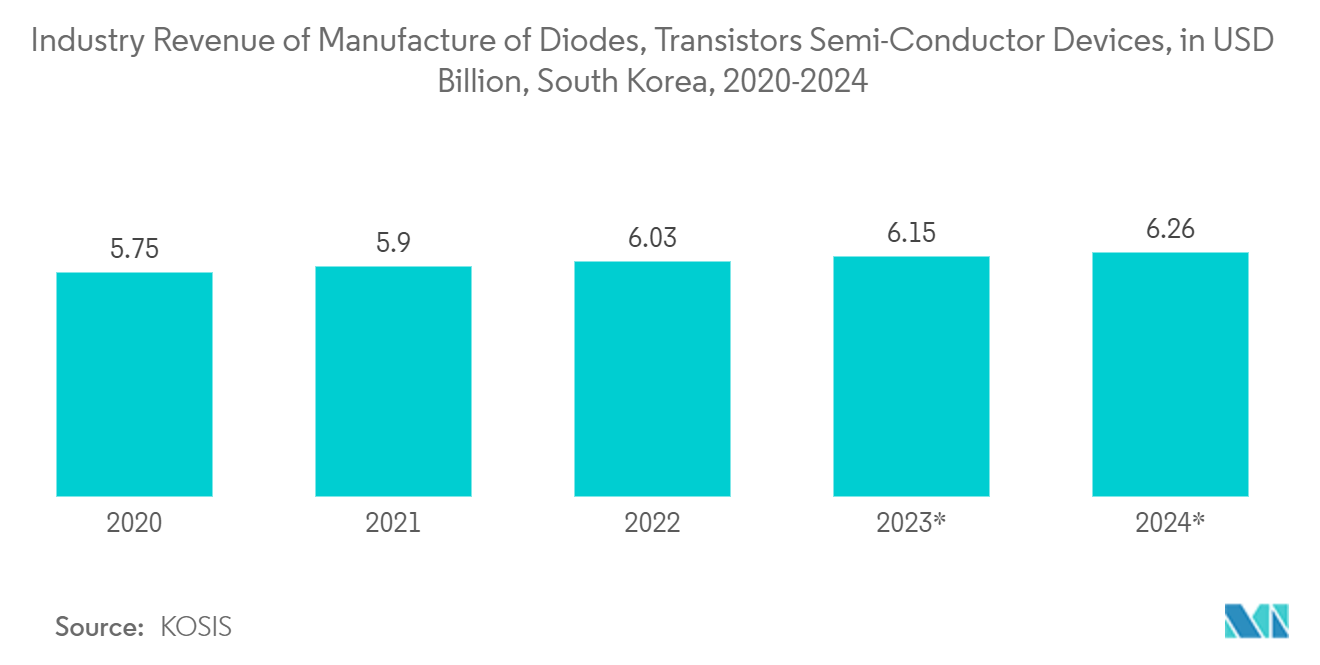
Asia Pacific to Experience Significant Market Growth
- The Asia Pacific region is an electronics hub with billions of electronic devices manufactured annually for consumption, specifically in this region. However, the Asia-Pacific region plays a significant role in exporting electronic components across the globe. The rapid growth in the consumer electronics market in this region is the key growth factor for the Asia-Pacific region in the Global Next Generation Transistor Market.
- Furthermore, the developing economies of the region, such as China and Japan, have massive electronics manufacturing bases and hold the potential to become significant players in the transistors market. Further, the next-generation phones would be entirely focused on improving the performance of phones with better specifications. Integrating more transistors is expected to direct to smaller phones with faster processing, which caters perfectly to consumer needs. According to IBEF, Shipments of "Made-in-India" smartphones rose 7% YoY in Q1 2022 to reach over 48 million units, while over 190 million smartphones made in India were shipped.
- According to IBEF, The National Policy on Electronics 2019 targets the production of one billion mobile handsets valued at USD 190 billion by 2025, out of which 600 million handsets valued at USD 100 billion are likely to be exported.
- Furthermore, China has made the growth of its semiconductor industry a key component of its Made in China 2025 agenda to alter this situation. China intends to increase its market share in electronics while having local chip production meet 80% of domestic demand for the numerous smartphones, PCs, and other devices that its 1.4 billion citizens use daily. All of these elements are anticipated to support market expansion.
- Moreover, the region has several players in the semiconductor market, like Samsung, Intel, and TSMC. These firms have acknowledged that starting in 2023, the production of logic devices using the 3nm or 2nm technology generations will gradually switch from the workhorse FinFETtransistor architectures to nanosheet-like architectures.
- Furthermore, in April 2022, The third-largest conglomerate in South Korea, SK Group, will acquire Yes Powertechnix, the only domestic manufacturer of power semiconductors based on a component of silicon and carbide (SiC), which are emerging as a key component of electric vehicles, as part of a group-wide effort to strengthen its battery-related business. SK Inc. said it would purchase management rights and a further KRW 120 billion (USD 95 million) to acquire 95.8% of Yes Powertechnix. Further, the business recently invested KRW 26.8 billion to acquire a 33.6% ownership in Yes Powertechnix. Such development may fuel the region's demand.
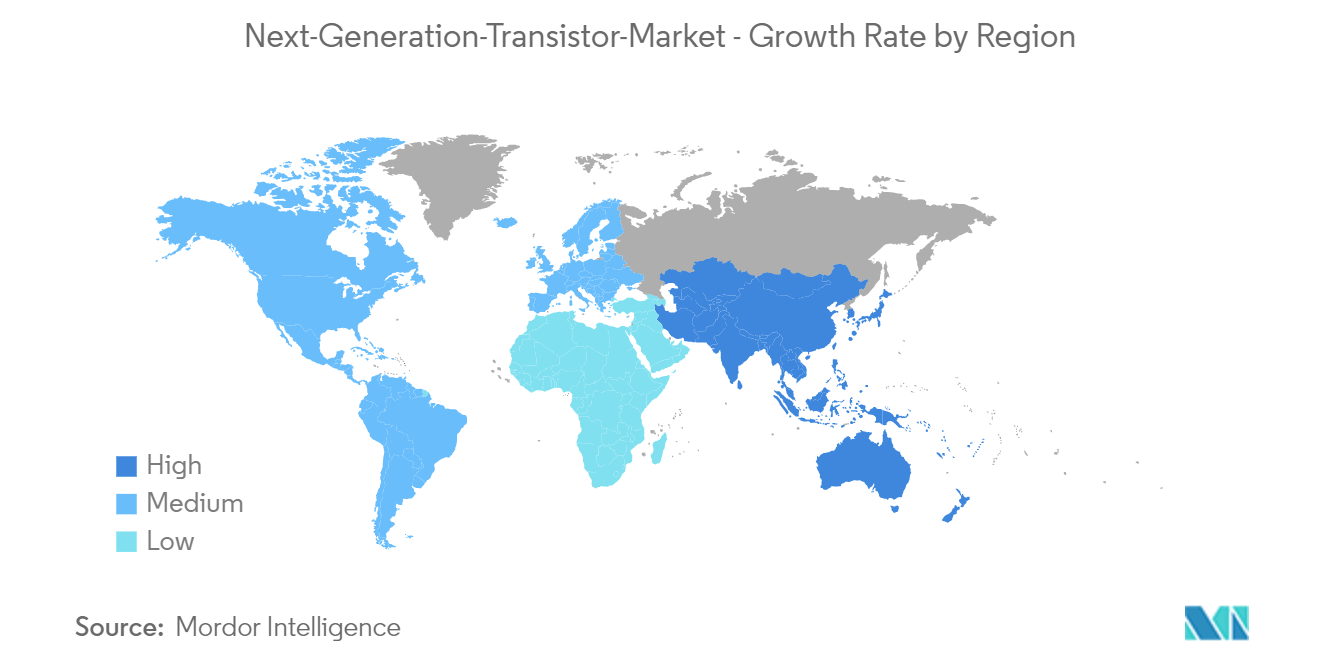
Next-Generation Transistors Industry Overview
The next-generation transistors market is highly competitive. The semiconductor industry itself is going through a phase of specialization. Historically, the industry has concentrated on producing computer chips that could perform several generalized functions. These chips were related to each other to some extent. But today, the applications of semiconductors are more nuanced and differentiated, leading to the proliferation of niche players with specialized expertise across various verticals. Moreover, in this industry, many players outsource their functionalities except a few major players like Intel, who design, fabricate, and manufacture semiconductor products. This makes the sector deeply connected to global supply chains and has made this industry fiercely competitive and deeply collaborative.
- June 2022 - GaN Systems, the multinational player in GaN (gallium nitride) power semiconductors, introduced a new transistor in the industry's broadest portfolio of GaN power transistors. The GS-065-018-2-L expands the firm's high-performance, low-cost transistor portfolio and features lower on-resistance, raised robustness and thermal performance, and an 850V VDS (transient) rating.
Next-Generation Transistors Market Leaders
-
NXP Semiconductors N.V.
-
Infineon Technologies AG
-
STMicroelectronics N.V.
-
Fairchild Semiconductor International, Inc. (ON Semiconductor Corp.)
-
Texas Instruments Incorporated
*Disclaimer: Major Players sorted in no particular order
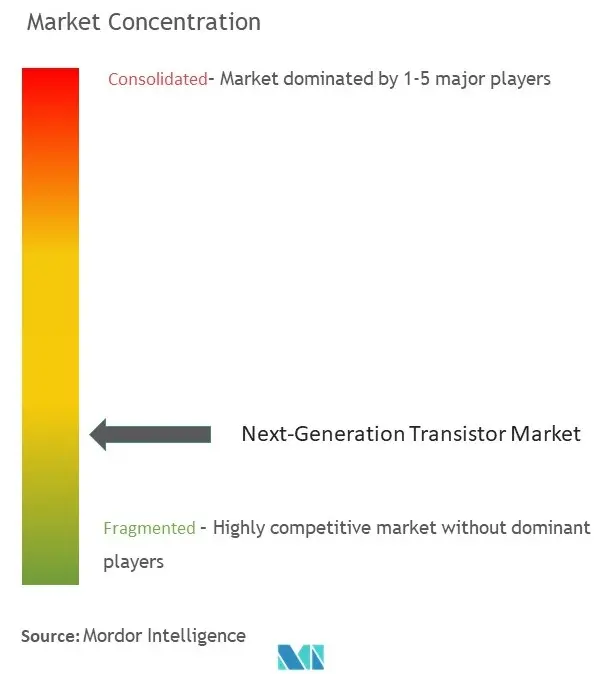
Next-Generation Transistors Market News
- September 2022 - EPC Power Conversion Corporation announced the EPC2050, a 350 V GaN transistor with a maximum RDS(on) of 80 mΩ and a pulsed output current of 26 A. The EPC2050 measures only 1.95 mm x 1.95 mm, making EPC2050-based solutions ten times smaller than solutions using equivalent silicon devices.
- July 2022 - Magnachip Semiconductor Corporation announced that the company unveiled a new 24V Metal-Oxide-Semiconductor Field-Effect Transistor (MOSFET) for wireless earphone batteries. The new 24V MOSFET addresses the goal of battery designers for extended battery life after a quick charge by reducing conduction loss. The core cell density of this new product has been increased by 30% compared to the previous version, while the design of the core cell, termination, and source pads has been enhanced to reduce the RDS(on) by 24%.
- March 2022 - NXP Semiconductors announced new RF GaN power transistors for 32T32R active antenna systems using its most delinquent proprietary gallium nitride (GaN) technology. The unique series complements NXP's existing portfolio of discrete GaN power amplifier solutions for 64T64R radios, protecting all cellular frequency bands from 2.3GHz to 4.0GHz.
Next-Generation Transistors Market Report - Table of Contents
1. INTRODUCTION
- 1.1 Study Deliverables
- 1.2 Study Assumptions
- 1.3 Scope of the Study
2. RESEARCH METHODOLOGY
3. EXECUTIVE SUMMARY
4. MARKET DYNAMICS
- 4.1 Market Overview
- 4.2 Introduction to Market Dynamics
-
4.3 Market Drivers
- 4.3.1 Technological Advancements Leading To Demand for Increasing Device Densities
- 4.3.2 Proliferation of Consumer Electronics
-
4.4 Market Restraints
- 4.4.1 Cost of Maintaining Moore's Law is Getting Higher with Low Returns
- 4.5 Industry Value Chain Analysis
-
4.6 Industry Attractiveness - Porter's Five Forces Analysis
- 4.6.1 Threat of New Entrants
- 4.6.2 Bargaining Power of Buyers
- 4.6.3 Bargaining Power of Suppliers
- 4.6.4 Threat of Substitute Products
- 4.6.5 Intensity of Competitive Rivalry
5. MARKET SEGMENTATION
-
5.1 By Type
- 5.1.1 High Electron Mobility Transistor (HEMT)
- 5.1.2 Bipolar Junction Transistor (BJT)
- 5.1.3 Field Effect Transistors (FET)
- 5.1.4 Multiple Emitter Transistor (MET)
- 5.1.5 Dual Gate Metal Oxide Semiconductor Field Effective Transistor
-
5.2 By End User Industry
- 5.2.1 Aerospace & Defense
- 5.2.2 Industrial
- 5.2.3 Telecommunications
- 5.2.4 Consumer Electronics
-
5.3 By Geography
- 5.3.1 North America
- 5.3.2 Europe
- 5.3.3 Asia Pacific
- 5.3.4 Latin America
- 5.3.5 Middle East & Africa
6. COMPETITIVE LANDSCAPE
-
6.1 Company Profiles
- 6.1.1 NXP Semiconductors N.V.
- 6.1.2 Infineon Technologies AG
- 6.1.3 STMicroelectronics N.V.
- 6.1.4 Fairchild Semiconductor International, Inc. (ON Semiconductor Corp.)
- 6.1.5 Texas Instruments Incorporated
- 6.1.6 Intel Corporation
- 6.1.7 GLOBALFOUNDRIES Inc.
- 6.1.8 Taiwan Semiconductor Manufacturing Company
- 6.1.9 Samsung Electronics Co., Ltd
- 6.1.10 Microchip Technology Inc.
- *List Not Exhaustive
7. INVESTMENT ANALYSIS
8. FUTURE OF THE MARKET
** Subject To AvailablityNext-Generation Transistors Industry Segmentation
A transistor is a semiconductor device that amplifies or switches electrical signals and power. The transistor is one of the basic building blocks of modern electronics. The study analyzes the market for various types of transistors that are evolving and using emerging materials other than Silicon in their manufacturing process.
The Next-Generation Transistors Market is segmented by Type (High Electron Mobility Transistor (HEMT), Bipolar Junction Transistor (BJT), Field Effect Transistors (FET), Multiple Emitter Transistor (MET), Dual Gate Metal Oxide Semiconductor Field Effective Transistor), End-User Industry (Aerospace & Defense, Industrial, Telecommunications, Consumer Electronics), and Geography. The market sizes and forecasts are provided in terms of value (USD million) for all the above segments. The impact of Covid-19 on the market and its impacted components are also covered under the scope of the study. Further, the disruption of the factors affecting the market's expansion has been covered in the survey regarding drivers and restraints.
| By Type | High Electron Mobility Transistor (HEMT) |
| Bipolar Junction Transistor (BJT) | |
| Field Effect Transistors (FET) | |
| Multiple Emitter Transistor (MET) | |
| Dual Gate Metal Oxide Semiconductor Field Effective Transistor | |
| By End User Industry | Aerospace & Defense |
| Industrial | |
| Telecommunications | |
| Consumer Electronics | |
| By Geography | North America |
| Europe | |
| Asia Pacific | |
| Latin America | |
| Middle East & Africa |
Next-Generation Transistors Market Research FAQs
What is the current Next-Generation Transistors Market size?
The Next-Generation Transistors Market is projected to register a CAGR of 4% during the forecast period (2024-2029)
Who are the key players in Next-Generation Transistors Market?
NXP Semiconductors N.V., Infineon Technologies AG, STMicroelectronics N.V., Fairchild Semiconductor International, Inc. (ON Semiconductor Corp.) and Texas Instruments Incorporated are the major companies operating in the Next-Generation Transistors Market.
Which is the fastest growing region in Next-Generation Transistors Market?
Asia Pacific is estimated to grow at the highest CAGR over the forecast period (2024-2029).
Which region has the biggest share in Next-Generation Transistors Market?
In 2024, the North America accounts for the largest market share in Next-Generation Transistors Market.
What years does this Next-Generation Transistors Market cover?
The report covers the Next-Generation Transistors Market historical market size for years: 2019, 2020, 2021, 2022 and 2023. The report also forecasts the Next-Generation Transistors Market size for years: 2024, 2025, 2026, 2027, 2028 and 2029.
Next-Generation Transistors Industry Report
Statistics for the 2024 Next-Generation Transistors market share, size and revenue growth rate, created by Mordor Intelligence™ Industry Reports. Next-Generation Transistors analysis includes a market forecast outlook to 2029 and historical overview. Get a sample of this industry analysis as a free report PDF download.



